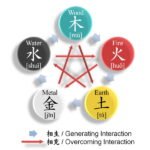Jinro Chamisul Soju, the top soju by sales in South Korea (Courtesy of Hitejinro)
South Korea’s soju and bibimbap are respectively the most popular liquor and food among foreigners, according to the government-backed Korean Food Promotion Institute’s survey released on Friday.
In a survey conducted last year for 9,000 people in overseas countries, some 41.1% said they knew soju, a strong Korean liquor. In the multiple choices, beer ranked second with 31.6%, followed by gwashilju, or fruit-infused liquor, with 22.8% and Cheongju, or clear refined rice, wine with 17.9%.
Soju was the best known in Southeast Asia, where 62.7% of the surveyed people recognized the so-called Korean vodka. Some 33.0% and 20.6% of those surveyed in North America and Europe knew the distilled alcoholic beverage, respectively.
Some 57.7% of the 9,000 surveyed people said they would drink Korean liquor, up 4.3 percentage points from a year earlier.
Some 65.5% of those polled in Northeast Asia said they would, followed by 59.3% in North America. The figure in North America jumped by 12.1 percentage points on-year, proving the increasing popularity of Korean alcoholic beverages in the region. Korean liquors were less popular in Europe, where 47.7% of the surveyed ones would drink them.
For reasons they would drink Korean liquors, 35.1% said it is tasty. Some 16.0% said they have received recommendations, and 15.5% answered they have learned the liquors from Korean drama or movies.
A bowl of bibimbap (Courtesy of Getty Images)
Some 39.2% knew Korean instant meals. By region, about 60.6% of those polled in Southeast Asia recognized such food, followed by 52.7% in Northeast Asia. The packaged meals were less known in North America and Europe with 26.1% and 20.7% of awareness, respectively.
About 45.4% of those surveyed have tried Korean instant meals. Bibimbap, or cooked rice with seasoned vegetables and hot pepper paste gochujang, topped their favorite easy meals with 22.8% of votes. Gimbap or Korean rolls, won 19.1%, followed by kimchi fried rice and Korean ramen with 13.0% and 11.5%, respectively.
For foreigners’ choice of Korean instant food, taste was the most important standard with 21.0% of the votes. Price ranked second with 13.5%, followed by quality and convenience with 11.5% and 10.7%, respectively.
By Hun-Hyoung Ha
hhh@hankyung.com
Jihyun Kim edited this article.















